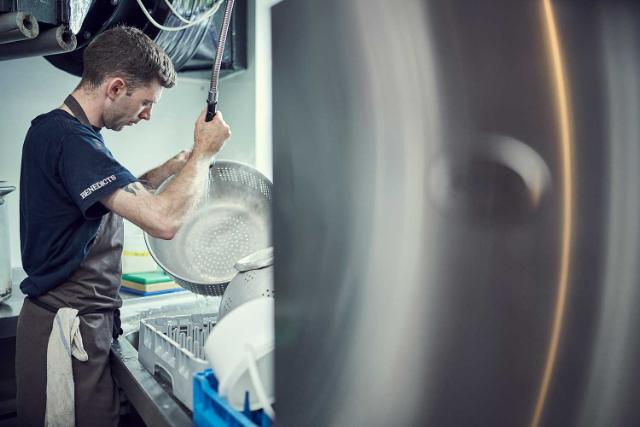Types of commercial kitchen layout
There are three typical commercial kitchen layouts. We’ve described each below with a few examples.
Think about which of these layout types would best suit your needs and the space available, or whether a blend of multiple layout styles is preferable. Knowing what you’ll be serving and how will help you decide which layout is best for you.
Assembly-line layout
The kitchen is laid out chronologically - in order of the main process - and equipment is set up in a line to create a conveyor belt-style operation. Many cafes, canteens, cafeterias and sandwich shops are set up in this way starting with the bread being cut, moving through fillings to dressings and sauces, before being toasted/heated if appropriate, then wrapped.
This type of layout is usually used by those that serve large amounts of food quickly (ie. fast food restaurants,) and has the benefit of being able to churn out large quantities easily.

Island-style layout
Island-style kitchens have one main block in the middle of the kitchen. Usually the cooking equipment is in the central block, with food prep, storage and service areas on the outer walls though this can be done in reverse, with prep carried out in the middle and cooking equipment around the walls.
This type of layout is usually used by those that work in large kitchens with a lot of staff, as it promotes a natural flow around the room and enables staff to move seamlessly from one section to the next.
Zone-style layout
Zone-style kitchens are divided into different sections, those for food prep, cooking, refrigeration, sanitation, washing and service.
This is a small commercial kitchen design layout and is usually used when space is at a premium. As the space in the centre of the room is kept open, it also promotes easy communication between staff.

Learn more

Five pillars of a commercial kitchen
Key things to consider when designing a commercial kitchen

Which fridge is right for me?
.png&width=640&format=webp)

